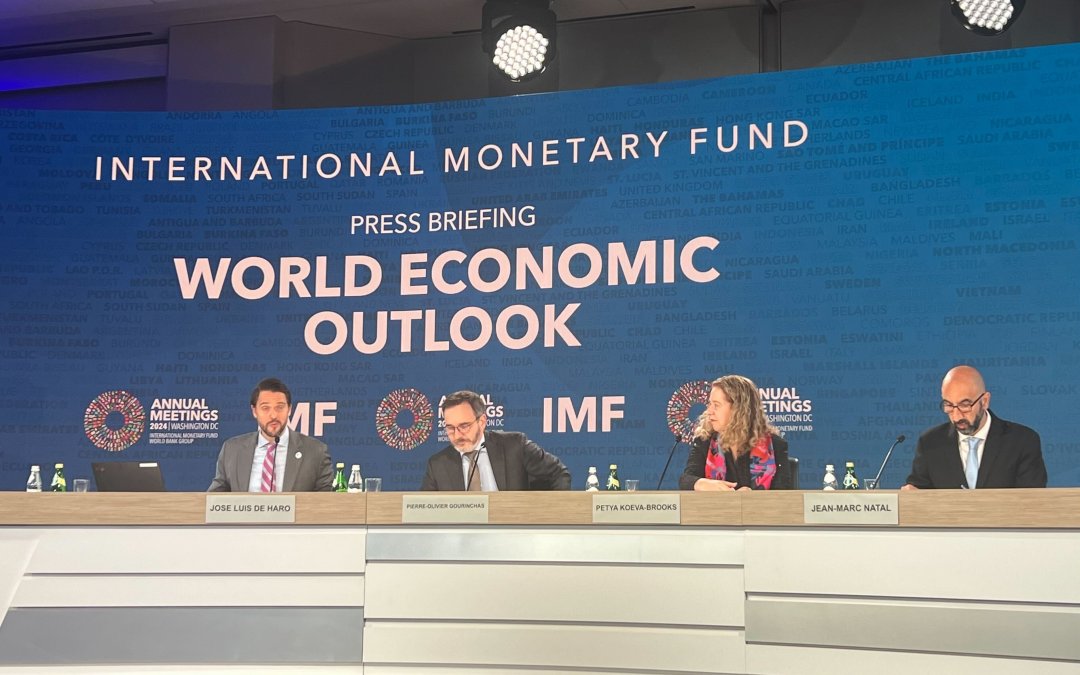WASHINGTON — The International Monetary Fund nudged its growth forecast for the United States upward Tuesday, amid steady economic growth and a global dip in inflation.
The latest World Economic Outlook, released during the IMF annual meeting, projected the U.S. economy to grow by 2.2% in 2025, up 0.3% from its July predictions.
The report was good news for the U.S., Pierre-Olivier Gourinchas, IMF Director of Research, said in a press conference Tuesday. As price levels disinflated, growth remained steady and abated recessionary fears.
“The battle against inflation is almost won,” Gourinchas said, later adding that “the decline in inflation without a global recession is a major achievement.”
While U.S. growth was adjusted upward, global growth forecasts steadied at 3.2% for the next two years — 1.8% for advanced economies and 4.2% for emerging economies. The report described the global trend as “stable, yet underwhelming.”
Gourinchas attributed U.S. growth to the labor force, specifically highlighting productivity gains and an expanding workforce fueled by immigration.
A Pew Research study found that the U.S. immigrant population grew by about 1.6 million in 2023, the largest annual increase in over two decades. Pablo Guerron, a Boston College economics professor and former Federal Reserve Bank of Philadelphia economist, added that this influx of immigration has also helped to alleviate inflation.
He explained that without the immigration surge, wages would be higher in sectors typically filled by immigrants, driving up costs for consumers.
During the press conference, Gourinchas said the world was “dominated by supply shocks.” Guerron attributed this to the interconnectedness of global markets.
For example, a company in the U.S. is going to import goods from China, he said. Then, those companies have their own supply needs. “The moment that any of these links in the supply chain breaks, then it has a domino effect,” he said
The IMF report concluded that the unwinding of these supply shocks worked in tandem with effective monetary policy and strong labor markets to avoid a global recession. Still, Gourinchas warned against intervention in the absence of credible market failures or national security threats, be it through trade or industrial policies.
“These measures can sometimes boost investment and activity in the short run,” he said. “But they often lead to retaliation and ultimately fail to deliver sustained improvements in standards of living.”
Guerron echoed the sentiment, adding that, in the U.S., trade policies like tariffs would “not (be) as impactful as in previous trade wars” because many jobs would be automated if firms were forced to return to the U.S.
The IMF projections are based on assumed behavior of central banks. During the press conference, Gourinchas said the Fund’s report was under the assumption that the Federal Reserve will cut rates twice by the end of 2024 and four times in 2025.
The first test of these assumptions will come at the Fed’s November meeting, just days after the U.S. elections.


